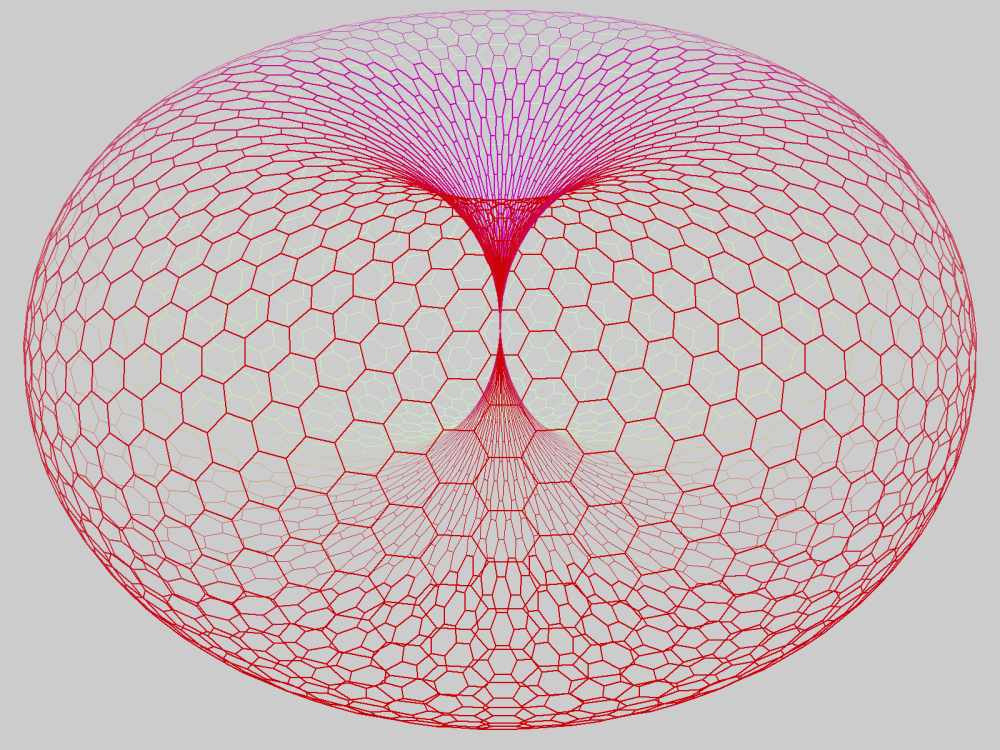mathematicians, physicists and other scientists, join in and rectify the mysterious omission! -
you should not relinquish such an important subject and object to the esoterics alone ... the horn torus is
an excellent graphical representation of complex numbers, a compactification with considerable more
properties than the Riemann sphere has, it connects zero and infinity in an amazing way, can be dynamised
by two independent turns, rotation around the axis and revolution around the torus bulge, what creates an
incredible complexity and forms a coherent comprehensive entity, also explaining the potential for
self-interaction and fractal order of complex numbers, and finally - most important - horn tori can be
interlaced into one another and so very well symbolise correlation between entities, easily interpretable
as physical objects: 'space', 'time', 'particles', 'forces' ...
... and considered more generally: classical mathematics* does not offer any well-elaborated and consistent
theory of topological systems ('spaces') that are based on (respectively 'spanned' by) continuously and
dynamically changing coordinates. Most practically working physicists doesn't bother that too much. They
may be happy and content with their sophisticated software for computer simulations, animations and
evaluations as explaining models for dynamic processes, being very successful thereby - no doubt, but from
a more philosophical point of view that's not exactly the ideal solution for describing a dynamic physics.
For true understanding we are in urgent need of revolutions (in thinking and as 'turns' :-), we should
reflect on the topic more constructively, starting from a very basic level after having achieved full
abstraction from our traditional imagination of (more or less static) spaces with embedded objects and
processes by strict epistemological reduction to fundamental entities, and we have to aim at a -
maybe disruptive - congruent mathematical model of physical 'reality' that comprises the pervasive and
unstoppable dynamic as main intrinsic property.
Static doesn't occur in quantum reality, and no model works sufficiently without underlying dynamic. That's
for sure! → continue
* With the horn torus model we leave 'classical
mathematics'. Though we pragmatically make use of well established skills in three dimensions to
illustrate the dynamic, the model is not dimensional - neither Euclidean nor non-Euclidean, neither
related to any vector space nor even connected to Hilbert spaces and the respective formalism - at least
not in an obviously predominant way. Horn tori, in particular the 'small' ones, induce an extremely
dynamic and complex geometry and simultaneously - the 'big' ones - are capable to form a nearly static
'flat space' with Euclidean rules when approaching 'infinite size'. Conventional methods are insufficient
or too laborious to describe such a hybrid of dynamic and static space properly and we maybe have to await
further progress in quantum computing for an appropriate approach and adequate treatment. Then mathematics
surely will experience changes, and surprises in physics cannot be ruled out. But note: here and now, on
these pages, we only play a preliminary game!
|
